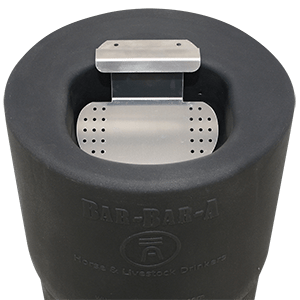Try our solar cost and savings calculator
Low energy livestock water tank de-icer
Collapse
X
-
Powerfab top of pole PV mount (2) | Listeroid 6/1 w/st5 gen head | XW6048 inverter/chgr | Iota 48V/15A charger | Morningstar 60A MPPT | 48V, 800A NiFe Battery (in series)| 15, Evergreen 205w "12V" PV array on pole | Midnight ePanel | Grundfos 10 SO5-9 with 3 wire Franklin Electric motor (1/2hp 240V 1ph ) on a timer for 3 hr noontime run - Runs off PV ||
|| Midnight Classic 200 | 10, Evergreen 200w in a 160VOC array ||
|| VEC1093 12V Charger | Maha C401 aa/aaa Charger | SureSine | Sunsaver MPPT 15A
solar: http://tinyurl.com/LMR-Solar
gen: http://tinyurl.com/LMR-Lister -
I guess it is too late to get your money back for your education. As delta V gets smaller, it becomes more efficient. HWBnew65W_17ms.jpg
Just an old image I grabbed. This is a 5% hysteresis from a test hey can be much smaller. It is adorable that you think you have any knowledge you could offer me.Comment
-
Based on comments and a couple pics, I am going to try and define just what
we are talking about here. If this is not it, let us see your detailed explanation.
PVtoHeater.jpg
Here is what I make of the discussion. The panels are allowed to charge the
cap to the MPPT voltage. As that is slightly exceeded, the MPPT switching
control closes the switch and allows current to flow through the water heater
element. With heater current exceeding panel current, the capacitor voltage
will drop slightly below MPPT and the switch will be opened. This continuous
action will keep the cap voltage close to MPPT.
This system I concede to be approaching the theoretically possible 100%
efficiency of other MPPT controls such as used for charging batteries. There
are a few practical considerations to actually making it effective.
The control should be as close to the heater as possible. Otherwise, the wiring
will be an antenna for interference generated by the switched current. The
inductance of long leads could also develop severe ringing voltages. The
resistance of the heater should be high enough to limit peak on current, or
losses will build up in the wiring, the switch, and the cap equivalent series
resistance.
Not shown here is the max water temp shutdown input.
I would not describe the above as adiabatic capacitor charging, I thought that
was charging a cap by connecting it directly to a voltage source. The blackboard
exercise never happens in the real world, things like resistance and inductance
prevent a cap current pulse of infinite amplitude and zero time. Load dump
comes to mind. Bruce RoeComment
Copyright © 2014 SolarReviews All rights reserved.
Powered by vBulletin® Version 6.1.3
Copyright © 2025 MH Sub I, LLC dba vBulletin. All rights reserved.
Copyright © 2025 MH Sub I, LLC dba vBulletin. All rights reserved.
All times are GMT-5. This page was generated at 06:30 PM.

Comment